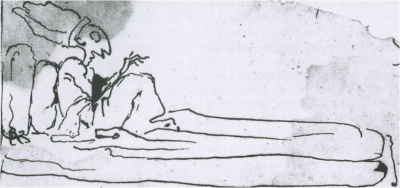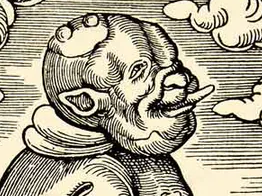Caricature of Innocent XI (1676) by Bernini
I’ve been furthering my research on the history of caricature, aided by two books: History of Caricature and Grotesque in Literature and Art (1864) by Thomas Wright and Caricature and Other Comic Art (1877) by James Parton, the two earliest Anglophone studies on the subject.
Both mention amusing examples of Roman caricature: the Pygmy caricatures in Pompeii.
Neither mentions the Caricature of Innocent XI (1676) by Bernini (above).


